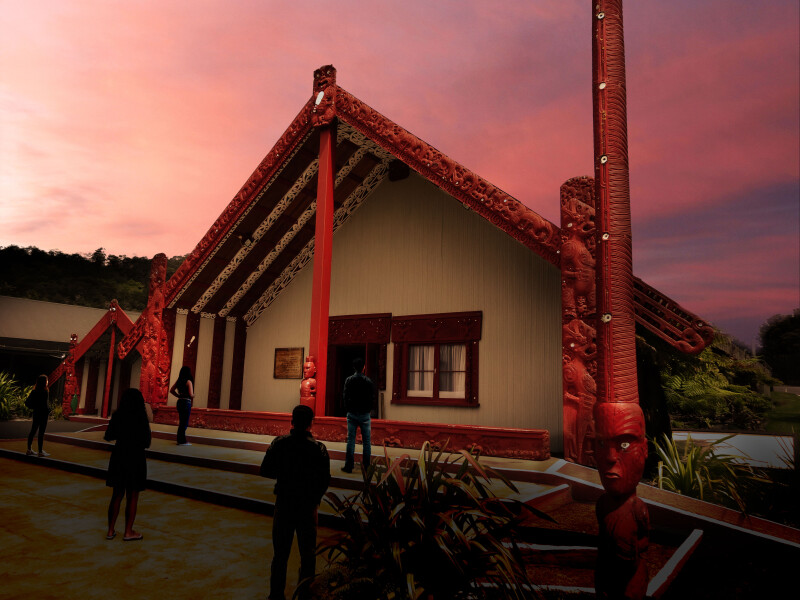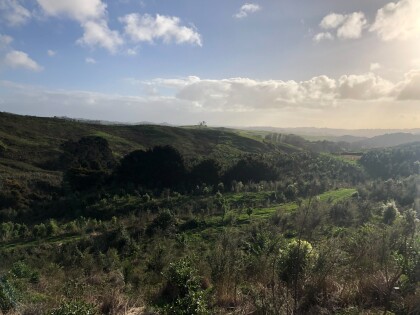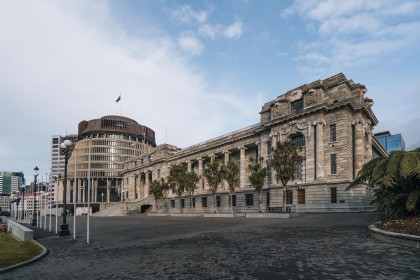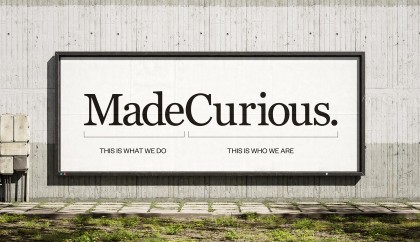The team at Te Potiki National Trust understood that technology was to play a pivotal role in their mission to break down barriers to re-connection so they undertook the monumental task of visiting and documenting the 780+ marae across Aotearoa.
The first iterations of the Maori Maps website provided a comprehensive database and map of marae including key details and photos serving as a critical resource for Māori looking to rediscover their roots.
But even the most meaningful tools need updating.
Making Reconnection Easier: Building a Better User Experience
Understanding the reason why people visit the site and the ultimate goals they want to achieve in using it was key to building the right thing. Working with Dr Hirini Tane and Rob Parsons from Te Potiki National Trust, I identified a set of key tasks their users were trying to accomplish, along with the associated social and emotional factors involved.
It turns out one of the biggest contributing factors preventing māori from reconnecting is the feeling of shame or self-consciousness from a lack of knowledge about their whakapapa. This is especially true for those who have lived outside of New Zealand all their lives and may not even know where to begin their journey. Having facilitated many of these reconnections over the years, Hirini was instrumental in helping me craft a user journey that incorporated many of these starting points that helped create the required connections.
Connecting the Dots: Discovering Marae with Intuitive Tools and Multiple Pathways
Offering multiple pathways to discover marae to align with the use case where only fragments of information may be known. A user may know a town name their Aunty or Uncle grew up in, the name of an iwi or hapū they belong to, or maybe just a general area of Aotearoa their marae might be located within.
Users can use the intuitive search feature (featured on every page) to match marae against, iwi, hapū, rohē and waka category sections. These sections offer additional discovery opportunities by showing the other categories and marae related to it helping narrow the search for a marae.
The map, central to the tool and name, provides a rich experience enabling previews of each marae and an option to toggle between a list view of the available marae depending on viewing preference.
By offering both map and list views, the updated platform makes it easier to find marae. New exploration tools, like related links and dedicated landing pages for marae categories, encourage deeper discovery.
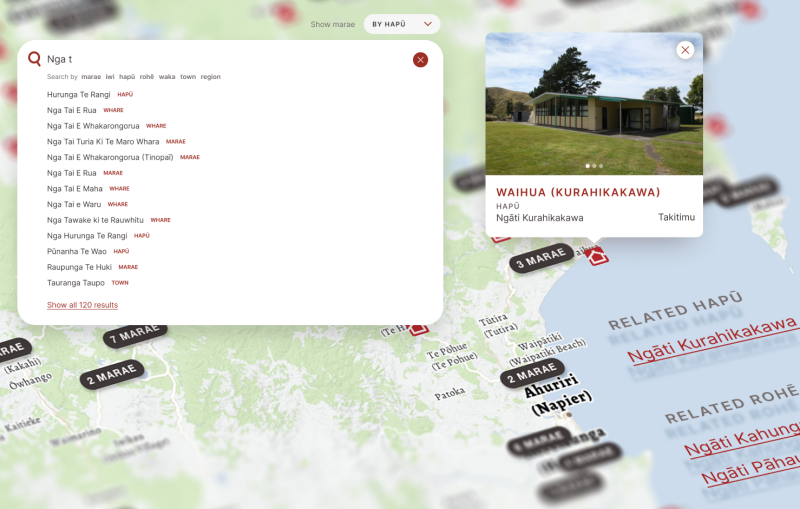
Immersive Marae Profiles to Connect and Discover
Along with the detailed information collected and maintained for each marae was a treasure trove of amazing photography both captured personally by the TPNT team and submitted by the marae themselves. It was important to me that we showcase each marae in a visually immersive way. Near full-screen imagery of the marae greet visitors transporting them to the waharoa (front gate) virtually. From there key information about the marae and contact information is easily accessible allowing visitors to make the final step in connecting.
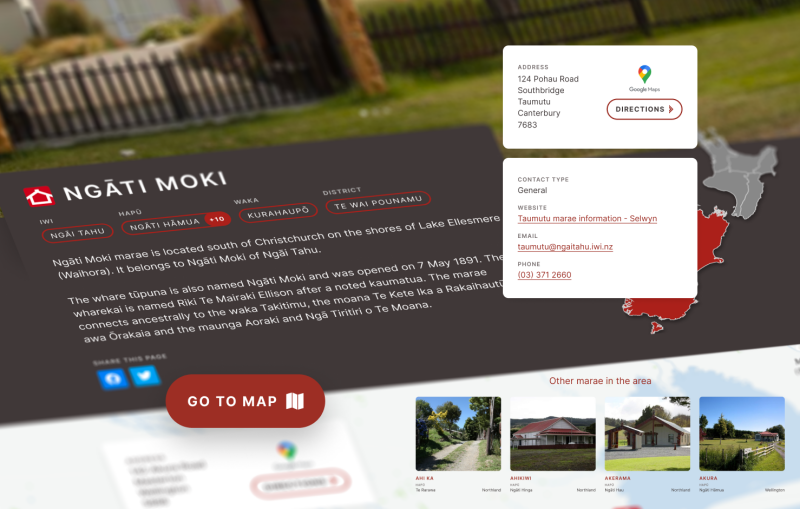
Designed for All: Seamless, Inclusive Experiences Across Every Device
Over 50% of visitors to the site use a mobile device. It goes without saying that the new site needs to provide the same experience regardless of the device used. Care has to be taken to ensure optimisation of both images and code tread lightly on the device and mobile data connection. Pages have been developed to be compatible with screen readers and other assistive technologies creating an inclusive experience for all.
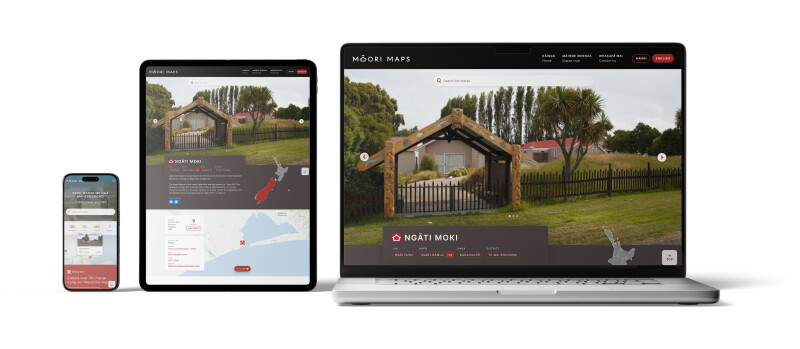
Bilingual by Design: Bringing English and Te Reo Together Seamlessly
A comprehensive approach to ensure the site content was available in both English and Te Reo was taken. This involved incorporating translations for all content right down to the individual components through the CMS controlled manually by the language selector or automatically using browser language detection.
Preserving the Past, Building the Future
16 years of data from 780 marae, including photography, were carefully migrated from the old CMS to the new. The new categorisation of marae to support discovery needed to be reflected within the data structure. This turned up some unexpected challenges. For example, there are many instances of different hapū and marae with the same name. How does one account for this in naming conventions and URL structure within the information architecture?
Now that we were giving hapū their own URLs, we had to figure out how to keep things clear—making sure hapū with the same name didn’t accidentally get treated the same. Since the source data only included names, this was tricky. To sort it out, we used the existing marae-iwi links during the import and added regional details to any ambiguous hapū. We also aimed to keep the existing URLs wherever we could to avoid extra redirects.
Unlocking Insights: Harnessing Data Analytics to Drive Continuous Improvement
Another area that is too often overlooked is data analytics. This is an integral piece of the puzzle when determining how a product or website is being used and provides insights into how the product or website can be improved over time. Tracking key events and touchpoints users interact with provides rich information about how the site is being used. Delivering these insights to not only the development team but also the partner themselves allows for a collaborative conversation about what’s working and what’s not.
Protecting Knowledge: Upholding Māori Data Sovereignty with Care and Integrity
Data sovereignty is crucial for Māori datasets to uphold cultural values and legal protections. It ensures Māori retain control over their knowledge and resources, aligning with tino rangatiratanga (self-determination) and safeguarding mātauranga Māori (traditional knowledge) under Te Tiriti o Waitangi. Culturally, it respects Māori tikanga (customs) in how data is stored and used, while legally, it prevents sensitive information from being subject to foreign laws, ensuring compliance with New Zealand's Privacy Act. This balance fosters trust and secures the integrity of Māori knowledge systems.
Local cloud data servers were carefully chosen to ensure data was stored and retained within New Zealand.
“We chose MadeCurious as they went to lengths to understand our values, mission, and (most importantly), ethics to serve the marae communities of Aotearoa.”
- Hirini Tane
Building Bridges to Heritage: Empowering Māori Culture Through Meaningful Technology
Working with Te Pōtiki National Trust was a privilege. Their commitment to preserving and promoting Māori culture through technology made this project deeply meaningful. It wasn’t just about improving a website; it was about enhancing a bridge to identity and belonging for many.
As we reflect on the work, we’re proud to have contributed to a tool that empowers Māori to reconnect with their heritage and ensures marae remain central to cultural life for generations to come.
Let’s keep building tools that matter.

